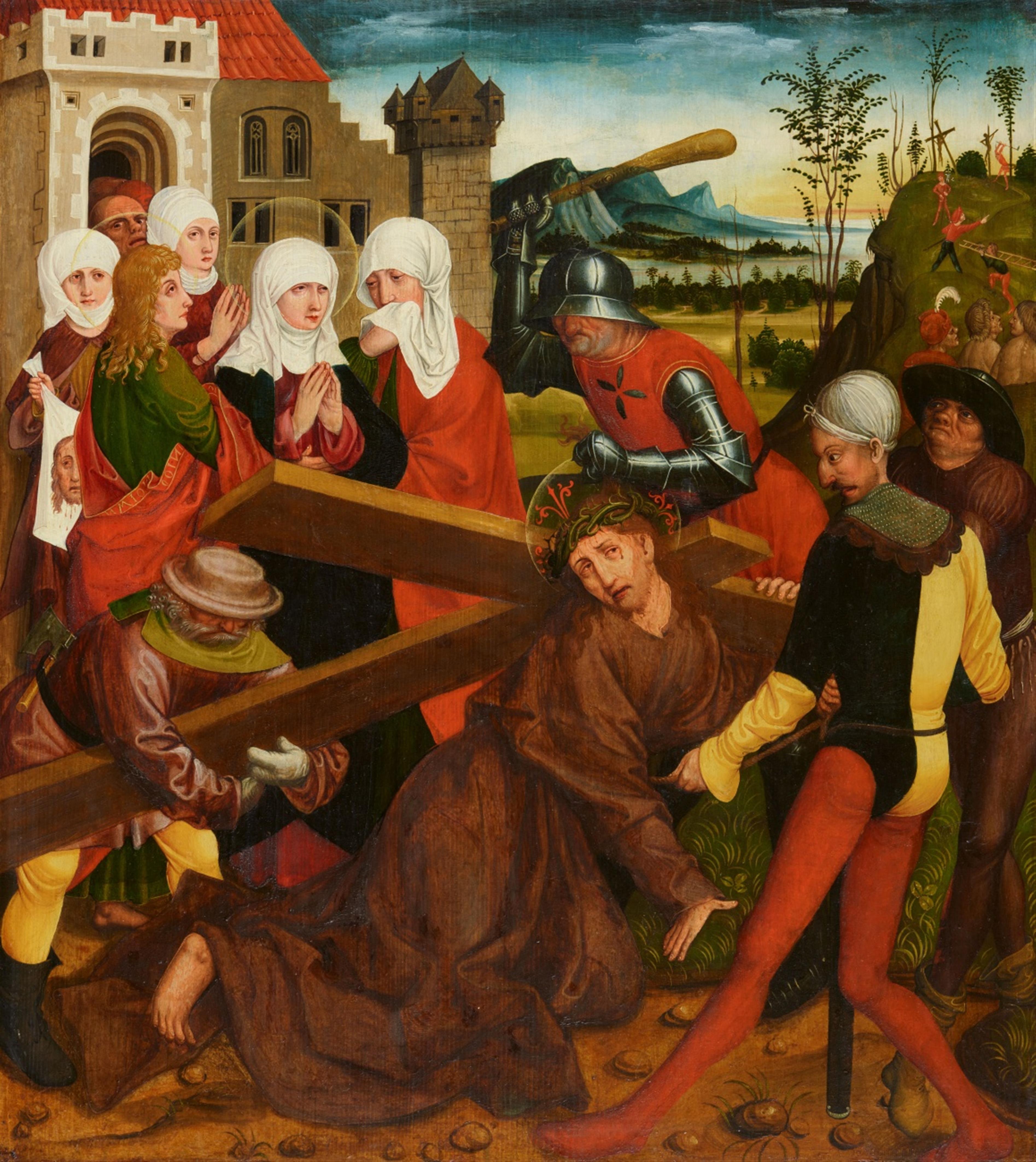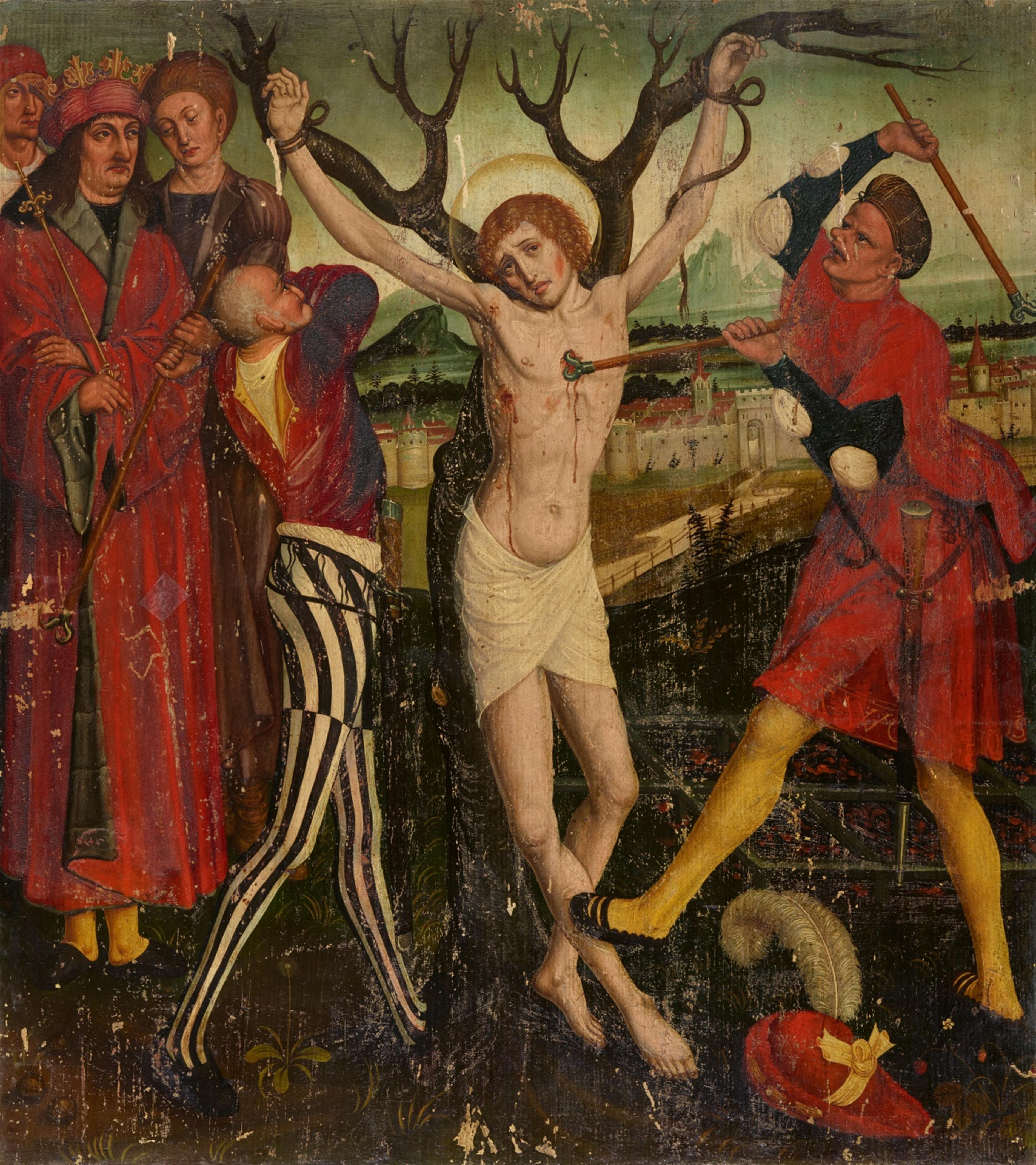Jan Polack, studio of
The Crucifixion (exterior) the Flagellation of Saint Laurence (interior)
Mixed media on conifer wood.. 78 x 88 cm.
The present work is an unsplit section of a side panel of a polyptych, painted on both sides in around 1500.
Here we see Christ sunk under the weight of the cross on his way to Mount Calvary by the gates of Jerusalem. Simon of Cyrene is shown rushing to his aid, attempting to alleviate some of the weight of the heavy cross by lifting its horizontal beam in both hands. On the right, two soldiers beat Jesus viciously. In-fitting with the cruelty of their act, these figures are depicted as ugly and crass, their coarse features revealing the extent of their violence. The exhausted Christ rises under the pain of their attack, but flight is impossible. On the right our gaze is led towards Mount Golgotha. A stranger image depicting the martyrdom of Saint Laurence of Rome is depicted on the inner face of the panel. In a similarly idyllic landscape, we see the saint being whipped with the same brutal intensity as the martyrdom that Christ had to endure. Laurence is shown here clothed only in a perizonium and bound to a leafless tree. His tormentors beat him with pokers and gouge them into his flesh. The griddle seen in the right background of the image alludes to the tortures he is later to endure: The saint was roasted over a steadily stoked fire, where he died a slow and painful death. Even from this fragment of a larger polyptych with movable panels we are immediately able to localise the piece to Bavaria, and further to the studio of Jan Polack, whose workshop was without doubt one of the most important and productive in the Munich region during the time from 1480 to 1519.
We would like to thank Dr Anna Moraht-Fromm for this catalogue entry and for her extensive expertise on this work.
Certificate
Dr Anna Moraht-Fromm, Berlin, March 2020
Provenance
Johann Nepomuk Sepp (1831 - 1910), Munich/ Bad Tölz. - Subsequently in family ownership.




